Reb MacRath's Blog, page 10
September 11, 2016
Business Cards: Show-Wins, No-Wins & Show-Loses
This is the first in a series of posts about a new subject close to my heart as I prepare to order a batch of business cards.
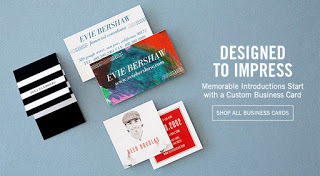
As we go, I'll explore why my last card failed years ago...and what goes into a great card. But let's keep these posts short and simple, easy to digest. There are so many things to consider--from card stock quality to finish to layout to fiendishly difficult copy--that today we'll start with just three basics. Here are the cardinal No-Win, Show-Win and Show-Lose rules.
The No-Win Cardinal Rule
You must have a great business card that represents you and your work. Your situation is No-Win without one. You have too many rivals, all screaming for sales and all handing out their cards. Professionals have business cards. We don't patronize losers who scribble their names and phone numbers on napkins. You're in a wilderness of signs and you will sink without a sound unless you heed this first Cardinal Rule. You don't need just a card but a great card that generates interest and heat...gives a sense of who you are and why you are different...and makes it easy to check out your work.
Accept this first rule and you're set to proceed. Go with no card or cheap card or amateur card...and you'll weep as you listen to this guy:
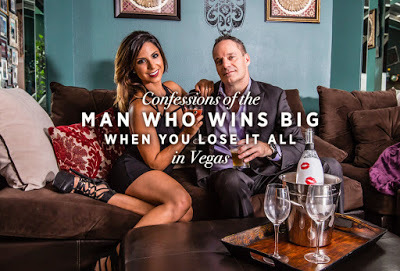
The Show-Win Cardinal Rule
In most places the next advice would be served as the finale. But it's something you should be thinking about from the get-go, from the very first thoughts of your card:
The way that you'll present your card is part and parcel of the show. If you've got a gold Cadillac among cards, you still won't get much mileage if you have to fumble to find it...or pull a battered specimen from your shirt pocket or purse. If your card is the winner it must be, then present it with casual, confident flair that people are sure to remember.
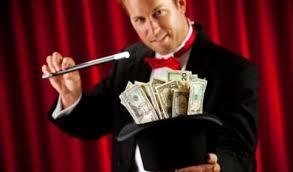
Easy does it, though. Beware of seeming to strain for the high notes. I once knew an artist who handed out cards as if they were hosts at a Catholic mass. First came the pricey card case which he delicately opened. Then he held the case in both hands with a reverential look. Within the opened case you saw different versions of his card, each with a different photo. And you were invited to take one...his eyes saying to swallow it whole but don't chew.
A more offhanded manner and an engaging 'Help yourself' would have turned that scene around
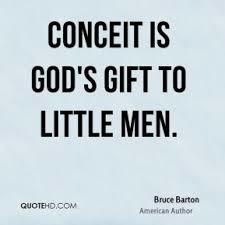
The Show-Lose Cardinal Rule
You must know your core card audience. Handing out your business card is a form of direct mail. In a blind direct mail campaign--e.g., sending Tweets to all your followers--the 'conversion rate', the percentage of those who will actually buy, is said to run somewhere from one to five percent. You can certainly better your chances with a terrific business card and a dynamite presentation.
But let's repeat: know your core card audience. Many people love collecting cards or are too shy to refuse one. By and large, you'll be wasting your money handing your cards out at random. Worse, you'll be wasting both money and time, if you're an ebook writer, debating with paper book snobs.
One final form of Show-Losing: if you have produced a classic card or have a cool, unique campaign, overcome the temptation to share it online. For pirates sail among us. And those who'd gladly sit on deck and watch you drown will plunder you without any sign of remorse.
Screw the pirates.

And know who your real friends are.
That's it for now. See you next week with further thoughts on business cards.

As we go, I'll explore why my last card failed years ago...and what goes into a great card. But let's keep these posts short and simple, easy to digest. There are so many things to consider--from card stock quality to finish to layout to fiendishly difficult copy--that today we'll start with just three basics. Here are the cardinal No-Win, Show-Win and Show-Lose rules.
The No-Win Cardinal Rule
You must have a great business card that represents you and your work. Your situation is No-Win without one. You have too many rivals, all screaming for sales and all handing out their cards. Professionals have business cards. We don't patronize losers who scribble their names and phone numbers on napkins. You're in a wilderness of signs and you will sink without a sound unless you heed this first Cardinal Rule. You don't need just a card but a great card that generates interest and heat...gives a sense of who you are and why you are different...and makes it easy to check out your work.
Accept this first rule and you're set to proceed. Go with no card or cheap card or amateur card...and you'll weep as you listen to this guy:

The Show-Win Cardinal Rule
In most places the next advice would be served as the finale. But it's something you should be thinking about from the get-go, from the very first thoughts of your card:
The way that you'll present your card is part and parcel of the show. If you've got a gold Cadillac among cards, you still won't get much mileage if you have to fumble to find it...or pull a battered specimen from your shirt pocket or purse. If your card is the winner it must be, then present it with casual, confident flair that people are sure to remember.

Easy does it, though. Beware of seeming to strain for the high notes. I once knew an artist who handed out cards as if they were hosts at a Catholic mass. First came the pricey card case which he delicately opened. Then he held the case in both hands with a reverential look. Within the opened case you saw different versions of his card, each with a different photo. And you were invited to take one...his eyes saying to swallow it whole but don't chew.
A more offhanded manner and an engaging 'Help yourself' would have turned that scene around

The Show-Lose Cardinal Rule
You must know your core card audience. Handing out your business card is a form of direct mail. In a blind direct mail campaign--e.g., sending Tweets to all your followers--the 'conversion rate', the percentage of those who will actually buy, is said to run somewhere from one to five percent. You can certainly better your chances with a terrific business card and a dynamite presentation.
But let's repeat: know your core card audience. Many people love collecting cards or are too shy to refuse one. By and large, you'll be wasting your money handing your cards out at random. Worse, you'll be wasting both money and time, if you're an ebook writer, debating with paper book snobs.
One final form of Show-Losing: if you have produced a classic card or have a cool, unique campaign, overcome the temptation to share it online. For pirates sail among us. And those who'd gladly sit on deck and watch you drown will plunder you without any sign of remorse.
Screw the pirates.

And know who your real friends are.
That's it for now. See you next week with further thoughts on business cards.
Published on September 11, 2016 13:12
September 4, 2016
How to Properly, Pefectly Stuff It
Odds are, when you think about stuffing, you think about this:
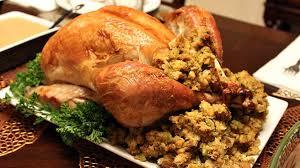
Or perhaps to cruder forms of stuffing whose pictures we'd better not share.
Today, though, my thoughts turned to what may seem to be the dullest of stuffings on earth:

Let's begin with a couple of questions:
1) How many envelopes have you stuffed in your life?
2) How often have you considered the quality of the envelope?
As for me, I've stuffed tens of thousands, the great bulk related to writing but scores of personal and professional letters, as well as the paying of bills, etc. I'd give myself a passing grade on most of the paper I've used. But envelopes? Ummmm, not really.Got to cut corners somewhere, I thought.
But yesterday I needed envelopes for a 4x6 postcard photo to be send to a select group of 50. I'd spent months getting into shape, hired a terrific photographer and been through an exhausting photo shoot. We'd ordered double-sided cards from VistaPrint. And now at last. we were ready to go. Except for the envelopes. And I knew where to get them cheap.
Sure enough, Office Depot was running a sale on 6x9 tan envelopes. 50 marked down to only $4.99! But my eye kept turning to the white photo envelopes designed for 4x6 photos. I liked the color...the size made sense to me--in a larger envelope, my card would be jostled about, maybe bent...But $15.99 plus tax? About $.35 an envelope?
Luckily, the inner voice I sometimes call The Voice went off: Are your friends and are your card not worth a mere $.35? Do you want to show up in their mailboxes in a beautiful shirt beneath a threadbare coat?'
I understand, I told The Voice. The impression that we make is made up of so many things. And our attitude toward ourselves, our work and others is expressed in the choices we make. Consistency is the great master key: I don't think I'd want to do business with someone who sent me a letter on gorgeous stationery, but filled with typos and food stains...and sent in a cheap envelope. Be one thing or the other: a class act or a schlub.
The Voice answered, 'You go, babe.'

Or perhaps to cruder forms of stuffing whose pictures we'd better not share.
Today, though, my thoughts turned to what may seem to be the dullest of stuffings on earth:

Let's begin with a couple of questions:
1) How many envelopes have you stuffed in your life?
2) How often have you considered the quality of the envelope?
As for me, I've stuffed tens of thousands, the great bulk related to writing but scores of personal and professional letters, as well as the paying of bills, etc. I'd give myself a passing grade on most of the paper I've used. But envelopes? Ummmm, not really.Got to cut corners somewhere, I thought.
But yesterday I needed envelopes for a 4x6 postcard photo to be send to a select group of 50. I'd spent months getting into shape, hired a terrific photographer and been through an exhausting photo shoot. We'd ordered double-sided cards from VistaPrint. And now at last. we were ready to go. Except for the envelopes. And I knew where to get them cheap.
Sure enough, Office Depot was running a sale on 6x9 tan envelopes. 50 marked down to only $4.99! But my eye kept turning to the white photo envelopes designed for 4x6 photos. I liked the color...the size made sense to me--in a larger envelope, my card would be jostled about, maybe bent...But $15.99 plus tax? About $.35 an envelope?
Luckily, the inner voice I sometimes call The Voice went off: Are your friends and are your card not worth a mere $.35? Do you want to show up in their mailboxes in a beautiful shirt beneath a threadbare coat?'
I understand, I told The Voice. The impression that we make is made up of so many things. And our attitude toward ourselves, our work and others is expressed in the choices we make. Consistency is the great master key: I don't think I'd want to do business with someone who sent me a letter on gorgeous stationery, but filled with typos and food stains...and sent in a cheap envelope. Be one thing or the other: a class act or a schlub.
The Voice answered, 'You go, babe.'
Published on September 04, 2016 08:43
August 28, 2016
Sometimes a Man Must Smoke Whatever He Must
I don't know how they do the greatest photography tricks. And I don't mean just tricks like this:
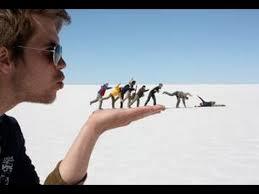
I mean the simplest, most natural ones where the camera seemed to extract the purest essence of a complex, charismatic self:



Well, after month of planning and prep work, including painful workouts, photographer Edd Cox and I had our date with destiny. And, ever the control freak, I'd picked everything I wore with an eye to color and impact: from the pale gray--not black--eye patch...to the Speedo-style white T-shirt...the light gray jeans...and the 13" fighting stick. I also packed a second, backup shirt in case the Speedo didn't work. And Edd wanted a notebook in one hand as well as the stick in the other.
We worked in a half-dozen locations and ended up taking a total of 254 shots. Later I'd be astonished to see that no more than 30 of the shots were worth a second look. And of the 30, only 4-5 could be picked as semi-finalists. And, ultimately 2 out of 254 would work for the promotional project that we had in mind: a limited edition of 50 personalized post cards to be sent to fave friends and fans.
And here's where the process, I think, becomes genuinely interesting. The two finalists came at the start and the end of the shoot. The first one is a relaxed shot by a waterfall, perfect in composition and setting and color, with me wearing both of those shirts. I hadn't had the chance yet to start posing and working the camera. And Edd hadn't started yet to tell me to turn this way or that, do this with my head and do that with the stick, then raise the notebook just a bit. But 250 shots later, I'd started coming unwound.
And Edd kept telling me to stop being such a stick and let him have some attitude. Turn this way, raise my head, widen my right eye, raise the notebook, turn the stick, for God's sake turn my shoulder--
I did the only thing a man like Reb MacRath can do: I forgot who and where I was, then whirled, raising the stick like a 13" cigar, which I proceeded to 'smoke' while I glowered at Edd Cox--who snapped the shot...then laughed like hell.
We had ourselves a winner.
The world's first photo of a writer smoking a nunchaku stick is coming your way soon.

I mean the simplest, most natural ones where the camera seemed to extract the purest essence of a complex, charismatic self:



Well, after month of planning and prep work, including painful workouts, photographer Edd Cox and I had our date with destiny. And, ever the control freak, I'd picked everything I wore with an eye to color and impact: from the pale gray--not black--eye patch...to the Speedo-style white T-shirt...the light gray jeans...and the 13" fighting stick. I also packed a second, backup shirt in case the Speedo didn't work. And Edd wanted a notebook in one hand as well as the stick in the other.
We worked in a half-dozen locations and ended up taking a total of 254 shots. Later I'd be astonished to see that no more than 30 of the shots were worth a second look. And of the 30, only 4-5 could be picked as semi-finalists. And, ultimately 2 out of 254 would work for the promotional project that we had in mind: a limited edition of 50 personalized post cards to be sent to fave friends and fans.
And here's where the process, I think, becomes genuinely interesting. The two finalists came at the start and the end of the shoot. The first one is a relaxed shot by a waterfall, perfect in composition and setting and color, with me wearing both of those shirts. I hadn't had the chance yet to start posing and working the camera. And Edd hadn't started yet to tell me to turn this way or that, do this with my head and do that with the stick, then raise the notebook just a bit. But 250 shots later, I'd started coming unwound.
And Edd kept telling me to stop being such a stick and let him have some attitude. Turn this way, raise my head, widen my right eye, raise the notebook, turn the stick, for God's sake turn my shoulder--
I did the only thing a man like Reb MacRath can do: I forgot who and where I was, then whirled, raising the stick like a 13" cigar, which I proceeded to 'smoke' while I glowered at Edd Cox--who snapped the shot...then laughed like hell.
We had ourselves a winner.
The world's first photo of a writer smoking a nunchaku stick is coming your way soon.
Published on August 28, 2016 10:29
August 21, 2016
How to Grow a Mustache Up Your Arse: Part 1
Of all the world's great mustaches, the wildest was Salvador Dali's.

The flamboyant, eccentric genius was every bit as colorful as his trademark upper lip. But the one thing I like better than even the best of his paintings is his answer to this question:
What would he do if a fascist regime forced him to shave off his mustache?
The question astonished the painter. He replied that he would happily rise to the great challenge--and grow a secret mustache everywhere, in his armpits, in his navel...even in his asshole.
Years ago, I had what I still think was an inspired idea: a wild blend of Southern Scotch. I saw the two themes fused within a single man: a former Scottish athlete who developed a crush on the South, which did not return his affection. Beaten almost to death and half-blinded, he returned as a new man five years later A cross between the Butler Boys--you know, Gerard and Rhett. A man of wealth and power now, founder of Boss Corrections.
Still, I think, a strong idea. But from the time I'd first conceived of my hero, Boss MacTavin, and my own reinvention as an ebook writer, I'd changed as as much as the times had. Boss' vintage Dodge Charger disappeared after the first book. After the third book, he outgrew his trademark Colt Python. At the same time, he kept his hybrid accent...his preference for shades of Confederate gray...his Southern courtliness fused with raw Scottish passion.
Dali's mustache, though, entered the picture with the recent backlash against the Confederate flag. I found myself forced to redo the cover of Southern Scotch because of its bad-ass Rebel flag. As luck would have it, this worked out well. A new cover artist succeeded in 'branding' the Boss MacTavin mysteries: unified layouts and lettering with a subtle Tartan cloth and a strong touch of danger.
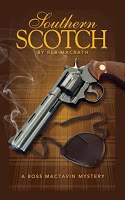
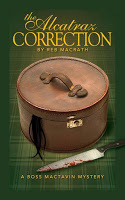
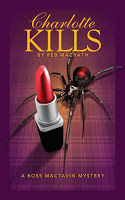
And I found I was able to keep tiny representations of the forbidden flag in Boss' wardrobe: a lapel or tie pin, for example...a small flag on one sleeve of his jacket...without branding him as a redneck. Boss is certainly wild and quirky, but he isn't this:
[image error]
or this:

or this:
[image error]
The branded covers, I believed, were a huge step forward. Nevertheless, I was still at a loss to convey Southern Scotch in my photos. How could I with one flag verboten and legs too spindly for a kilt?
Well, I found myself thinking of Dali's remark...and suddenly I found a way of growing a Dali mustache up my arse--just in time for my new promo photo.
Stay tuned for the Daliesque conclusion next week.

The flamboyant, eccentric genius was every bit as colorful as his trademark upper lip. But the one thing I like better than even the best of his paintings is his answer to this question:
What would he do if a fascist regime forced him to shave off his mustache?
The question astonished the painter. He replied that he would happily rise to the great challenge--and grow a secret mustache everywhere, in his armpits, in his navel...even in his asshole.
Years ago, I had what I still think was an inspired idea: a wild blend of Southern Scotch. I saw the two themes fused within a single man: a former Scottish athlete who developed a crush on the South, which did not return his affection. Beaten almost to death and half-blinded, he returned as a new man five years later A cross between the Butler Boys--you know, Gerard and Rhett. A man of wealth and power now, founder of Boss Corrections.
Still, I think, a strong idea. But from the time I'd first conceived of my hero, Boss MacTavin, and my own reinvention as an ebook writer, I'd changed as as much as the times had. Boss' vintage Dodge Charger disappeared after the first book. After the third book, he outgrew his trademark Colt Python. At the same time, he kept his hybrid accent...his preference for shades of Confederate gray...his Southern courtliness fused with raw Scottish passion.
Dali's mustache, though, entered the picture with the recent backlash against the Confederate flag. I found myself forced to redo the cover of Southern Scotch because of its bad-ass Rebel flag. As luck would have it, this worked out well. A new cover artist succeeded in 'branding' the Boss MacTavin mysteries: unified layouts and lettering with a subtle Tartan cloth and a strong touch of danger.



And I found I was able to keep tiny representations of the forbidden flag in Boss' wardrobe: a lapel or tie pin, for example...a small flag on one sleeve of his jacket...without branding him as a redneck. Boss is certainly wild and quirky, but he isn't this:
[image error]
or this:

or this:
[image error]
The branded covers, I believed, were a huge step forward. Nevertheless, I was still at a loss to convey Southern Scotch in my photos. How could I with one flag verboten and legs too spindly for a kilt?
Well, I found myself thinking of Dali's remark...and suddenly I found a way of growing a Dali mustache up my arse--just in time for my new promo photo.
Stay tuned for the Daliesque conclusion next week.
Published on August 21, 2016 11:49
August 13, 2016
How to beat a writing block with a common film technique
[image error]
So today, a glorious day, in the writing of the fourth Boss MacTavin mystery, I found myself suddenly blocked. An odd time to be blocked, now that I was nearing the home stretch. A little more detective work, loose ends to tie up, then a terrific action scene in a forsaken alley.
And yet today in the Writer Room of the central library I stared and stared at the naked page. Major inconsistencies in the tale tormented me: how could the main villain not have seen through Boss's ingenious disguise if two other villains, now dead, had been aware of it? Etc. That sort of thing. I couldn't see how to resolve this and moving forward seemed impossible.
What the hell was I to do, go days or weeks without writing when I'd written over 50,000 words?
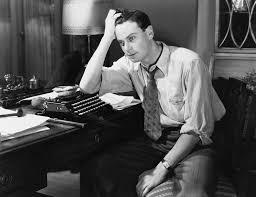
Better writers than I am have written of this. And I took heart from Stephen King:
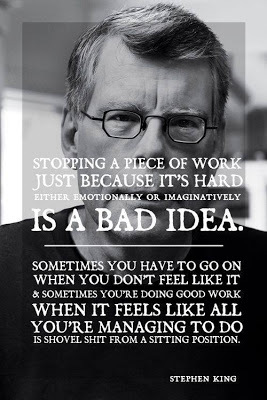
Still, I had to slug my way free my own way. And my mind turned to how some great movies are shot: entirely out of sequence. Scenes are shot when certain actors are available...or when a location permit is obtained...or when the weather is right.
So, while I wait for 'the weather' to improve on the novel's next scene, I can move on to the ending, which is fairly clear in my mind. At least the big brawl in the alley. That scene may help fill in much of the blank space preceding. If, I'll finish what I can, then begin the second draft, with hopes the inconsistencies resolve themselves as I go.
The worst thing, as I see it now, is to sit and brood and do nothing. Keep going, preserve the momentum--and keep the cameras rolling!

So today, a glorious day, in the writing of the fourth Boss MacTavin mystery, I found myself suddenly blocked. An odd time to be blocked, now that I was nearing the home stretch. A little more detective work, loose ends to tie up, then a terrific action scene in a forsaken alley.
And yet today in the Writer Room of the central library I stared and stared at the naked page. Major inconsistencies in the tale tormented me: how could the main villain not have seen through Boss's ingenious disguise if two other villains, now dead, had been aware of it? Etc. That sort of thing. I couldn't see how to resolve this and moving forward seemed impossible.
What the hell was I to do, go days or weeks without writing when I'd written over 50,000 words?

Better writers than I am have written of this. And I took heart from Stephen King:

Still, I had to slug my way free my own way. And my mind turned to how some great movies are shot: entirely out of sequence. Scenes are shot when certain actors are available...or when a location permit is obtained...or when the weather is right.
So, while I wait for 'the weather' to improve on the novel's next scene, I can move on to the ending, which is fairly clear in my mind. At least the big brawl in the alley. That scene may help fill in much of the blank space preceding. If, I'll finish what I can, then begin the second draft, with hopes the inconsistencies resolve themselves as I go.
The worst thing, as I see it now, is to sit and brood and do nothing. Keep going, preserve the momentum--and keep the cameras rolling!

Published on August 13, 2016 15:46
August 7, 2016
On the Bloody Good, Good Bloody Art of Surprise
There's nothing quite like a good jack-in-the-box to take a writer's breath away and send him smiling back to work.
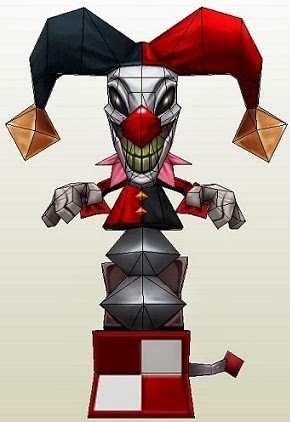
I outline more than most, I know, to screw up my nerve to begin a new book. But I outline only to a point, after which I may know the main 'beats' of the tale, though not the connecting links from one chapter to the next. And sometimes the beats have long spaces between: for example, from my hero's realization that X was actually murdered and that Y is the villain...to his knowledge of how to Correct this.
My new WIP (work in progress), the fourth Boss MacTavin mystery, has blindsided me repeatedly with its infernal surprises. Now, I don't mean only the plot twists, which I can't give away here. I mean little mysteries that simply refused to come clear...until now: how, when and where Boss will get to use the fab new gun he was given in Boss #3, when he's been forbidden in this book the use of any weapon--and is regularly checked by the cops...how, when and where he'll get a scene with Suzy Wong, his new love, though it isn't safe for her to be with him now in Seattle...etc.
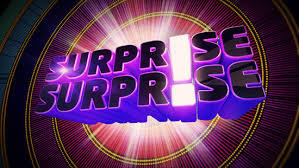
The question for me is no longer whether to outline or not. To me an over-structured tale that drives the tale's beats with a whip is as flawed as a shaggy dog story that's been made up on the fly. Whether s/he writes down the outline or conceives it on long, brooding walks by the beach, the writer should begin, I think, with a working sense of the book's structure and a grasp of the general beats.
That said, I now would add that surrender is also essential. The best stories are not paint-by-number. And the real heart often won't come clear until we've begun. When that happens, we'd better be humble enough to turn the reins over and let Baby drive.

Gotta go. Still waiting to find out how to get Boss MacTavin his gun!

I outline more than most, I know, to screw up my nerve to begin a new book. But I outline only to a point, after which I may know the main 'beats' of the tale, though not the connecting links from one chapter to the next. And sometimes the beats have long spaces between: for example, from my hero's realization that X was actually murdered and that Y is the villain...to his knowledge of how to Correct this.
My new WIP (work in progress), the fourth Boss MacTavin mystery, has blindsided me repeatedly with its infernal surprises. Now, I don't mean only the plot twists, which I can't give away here. I mean little mysteries that simply refused to come clear...until now: how, when and where Boss will get to use the fab new gun he was given in Boss #3, when he's been forbidden in this book the use of any weapon--and is regularly checked by the cops...how, when and where he'll get a scene with Suzy Wong, his new love, though it isn't safe for her to be with him now in Seattle...etc.

The question for me is no longer whether to outline or not. To me an over-structured tale that drives the tale's beats with a whip is as flawed as a shaggy dog story that's been made up on the fly. Whether s/he writes down the outline or conceives it on long, brooding walks by the beach, the writer should begin, I think, with a working sense of the book's structure and a grasp of the general beats.
That said, I now would add that surrender is also essential. The best stories are not paint-by-number. And the real heart often won't come clear until we've begun. When that happens, we'd better be humble enough to turn the reins over and let Baby drive.

Gotta go. Still waiting to find out how to get Boss MacTavin his gun!
Published on August 07, 2016 08:28
On the Fine Art of Bloody Good, Good Bloody Surprise
There's nothing quite like a good jack-in-the-box to take a writer's breath away and send him smiling back to work.

I outline more than most, I know, to screw up my nerve to begin a new book. But I outline only to a point, after which I may know the main 'beats' of the tale, though not the connecting links from one chapter to the next. And sometimes the beats have long spaces between: for example, from my hero's realization that X was actually murdered and that Y is the villain...to his knowledge of how to Correct this.
My new WIP (work in progress), the fourth Boss MacTavin mystery, has blindsided me repeatedly with its infernal surprises. Now, I don't mean only the plot twists, which I can't give away here. I mean little mysteries that simply refused to come clear...until now: how, when and where Boss will get to use the fab new gun he was given in Boss #3, when he's been forbidden in this book the use of any weapon--and is regularly checked by the cops...how, when and where he'll get a scene with Suzy Wong, his new love, though it isn't safe for her to be with him now in Seattle...etc.

The question for me is no longer whether to outline or not. To me an over-structured tale that drives the tale's beats with a whip is as flawed as a shaggy dog story that's been made up on the fly. Whether s/he writes down the outline or conceives it on long, brooding walks by the beach, the writer should begin, I think, with a working sense of the book's structure and a grasp of the general beats.
That said, I now would add that surrender is also essential. The best stories are not paint-by-number. And the real heart often won't come clear until we've begun. When that happens, we'd better be humble enough to turn the reins over and let Baby drive.

Gotta go. Still waiting to find out how to get Boss MacTavin his gun!

I outline more than most, I know, to screw up my nerve to begin a new book. But I outline only to a point, after which I may know the main 'beats' of the tale, though not the connecting links from one chapter to the next. And sometimes the beats have long spaces between: for example, from my hero's realization that X was actually murdered and that Y is the villain...to his knowledge of how to Correct this.
My new WIP (work in progress), the fourth Boss MacTavin mystery, has blindsided me repeatedly with its infernal surprises. Now, I don't mean only the plot twists, which I can't give away here. I mean little mysteries that simply refused to come clear...until now: how, when and where Boss will get to use the fab new gun he was given in Boss #3, when he's been forbidden in this book the use of any weapon--and is regularly checked by the cops...how, when and where he'll get a scene with Suzy Wong, his new love, though it isn't safe for her to be with him now in Seattle...etc.

The question for me is no longer whether to outline or not. To me an over-structured tale that drives the tale's beats with a whip is as flawed as a shaggy dog story that's been made up on the fly. Whether s/he writes down the outline or conceives it on long, brooding walks by the beach, the writer should begin, I think, with a working sense of the book's structure and a grasp of the general beats.
That said, I now would add that surrender is also essential. The best stories are not paint-by-number. And the real heart often won't come clear until we've begun. When that happens, we'd better be humble enough to turn the reins over and let Baby drive.

Gotta go. Still waiting to find out how to get Boss MacTavin his gun!
Published on August 07, 2016 08:28
July 31, 2016
Should We Give Our Readers Hell...or Give Them What They Want?
Almost all writers I've known have been torn between two impulses they're helpless to resist. On the one hand, if they've worked for years and are finally enjoying some well-earned success, they're more than a little scared of messing with the formula. The voice of Success urges:
[image error]
And so they do, and continue to do, until the rebel devil cries:
[image error]
They begin to feel enslaved by their successful series or threatened in some unfathomable way by the love readers feel for one standalone book. Maddened by fear or resentment, they either tank the series or give it a twist that will turn readers off. Or, rather than follow their one runaway success with a sequel or something in a similar vein, they do something offputtingly different. Ah, the sweet siren call of
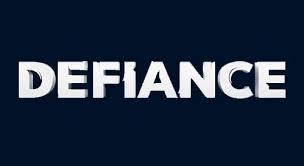
One remarkably talented writer I know is taking time off from a series of Tartan Noir mysteries--one that's been gathering steam--to work on an historical epic of 100,000 words. Another mystery writer I follow swings almost depravedly from mystery to romance to sci-fi. Hey, even Conan Doyle felt compelled to try at least to kill off Sherlock Holmes.
Lawrence Sanders comes to mind as a supreme example of a writer who perfectly balanced his commercial instincts and his independent spirit. Unwilling to grind out a Deadly Sin novel a year (the Sin books took 3-4 years to do), he launched a second series--of shorter and lighter Commandments. Oh, and he wrote two limited series of just two books apiece--the Peter Tangent and the Timothy Cone books. Meanwhile, always busy, he wrote many standalone titles, from erotica to thrillers to capers. Then, when he'd grown older, he launched the easy and breezy Archy McNally series.
[image error]
The man I call The Colonel had brilliance to burn and a game plan that reminds us of Russell Blake--who's also committed to writing whatever he pleases to write.
For those who are less prolific, Claude Bouchard offers an excellent alternative. Lightly scattered among entries in his bestselling Vigilante series are standalones written to appease the rebel devil's voice.
We can see the same spirit at work in Clint Eastwood's early film career: one film for himself to each three for his fans. The older Clint likes to say that he'd always been able to tell his fans to buzz off if they weren't amused. But the man who made the two Whichways had one eye at least on box office success.
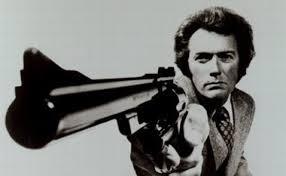
Somehow we all have to find our own way to calm those dueling voices.
[image error]
And so they do, and continue to do, until the rebel devil cries:
[image error]
They begin to feel enslaved by their successful series or threatened in some unfathomable way by the love readers feel for one standalone book. Maddened by fear or resentment, they either tank the series or give it a twist that will turn readers off. Or, rather than follow their one runaway success with a sequel or something in a similar vein, they do something offputtingly different. Ah, the sweet siren call of

One remarkably talented writer I know is taking time off from a series of Tartan Noir mysteries--one that's been gathering steam--to work on an historical epic of 100,000 words. Another mystery writer I follow swings almost depravedly from mystery to romance to sci-fi. Hey, even Conan Doyle felt compelled to try at least to kill off Sherlock Holmes.
Lawrence Sanders comes to mind as a supreme example of a writer who perfectly balanced his commercial instincts and his independent spirit. Unwilling to grind out a Deadly Sin novel a year (the Sin books took 3-4 years to do), he launched a second series--of shorter and lighter Commandments. Oh, and he wrote two limited series of just two books apiece--the Peter Tangent and the Timothy Cone books. Meanwhile, always busy, he wrote many standalone titles, from erotica to thrillers to capers. Then, when he'd grown older, he launched the easy and breezy Archy McNally series.
[image error]
The man I call The Colonel had brilliance to burn and a game plan that reminds us of Russell Blake--who's also committed to writing whatever he pleases to write.
For those who are less prolific, Claude Bouchard offers an excellent alternative. Lightly scattered among entries in his bestselling Vigilante series are standalones written to appease the rebel devil's voice.
We can see the same spirit at work in Clint Eastwood's early film career: one film for himself to each three for his fans. The older Clint likes to say that he'd always been able to tell his fans to buzz off if they weren't amused. But the man who made the two Whichways had one eye at least on box office success.

Somehow we all have to find our own way to calm those dueling voices.
Published on July 31, 2016 09:22
July 24, 2016
How 2 Wrong Turns Became 3 Rights

This week a string of Wrong events converged into a theme. And I tip my hat to Tony, whose quote I found after I'd already learned--and so I could appreciate that it couldn't be put any better.
Event the First:
This week I returned to writing a book I'd set aside two months ago. I'd needed time to recover from a nasty injury--and time to screw up my courage. My backpack had been stolen in May and along with my laptop I'd lost a notebook containing some 50 new pages. Though I'd had some grave doubts about sections, the lost pages came to assume almost mythical importance. And if I couldn't recover those pages, how could I hope to go on?
One day like any other day, I simply couldn't not continue. I accepted the futility of trying a word-for-word recapture. Hell, after a couple of months I couldn't even outline exactly what I'd done. Then again, though, I'd started doubt some major decisions that I did recall: including the too-sudden killings of two minor characters I'd come to like. I set out to take every day as it came, along with each narrative turn.
End result: the two minor characters not only lived, they took on more active roles. And the female character has transformed into something shockingly different from the act that she'd put on. As I wrote, freed of my fears of the loss, a section I'd forgotten about took its place back in the narrative queue but at a new time, in a different way. Now my confidence came back to me. My book was back in business. And...
BONUS!
Lighting struck again: a cool idea for a spin-off series starring the two Seattle characters whom I haven't killed and a major player in the Boss MacTavin series, largely set in San Francisco.
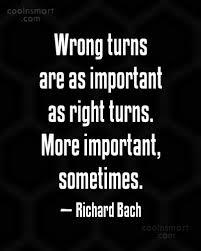
Event the Second:
I needed shirts for the new job. No problem, I thought. At Value Village in Capitol Hill I could certainly find 3-4 like-new top quality shirts, worth $150-$200 marked down to $12-$15 each.
Drat the cat, though. That VV store had closed and the nearest other sites weren't to be easily reached. What to do? I Googled Seattle Thrift Stores and made my decision: I'd try...Salvation Army?

Talk about wrong roads. The Men's Shirt rack held hundreds of dress shirts--and every one of them looked soiled, old and cheap. They might as well have been stamped Loserville, fine with the crowd that had thronged there. I wheeled around, about to go. But on the way I spied a rack with attractive looking shirts that hadn't attracted a crowd.
Here, sold as Sportshirts, were the designer and premium shirts: Sean Jean, Calvin Klein, Tommy Hilfiger, Tommy Bahama, Ralph Lauren...I walked out with one helluva trio for under $50. And I'll return to that store twice a month, now that I know where to look.
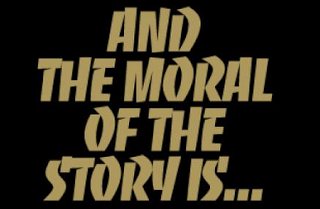
Actually, there's more than one, all complementing Tony's:1) As I learned with the pages I'd lost: Though I hadn't lost them on purpose because the work displeased me, the experience taught me faith in greater powers at play. I remained chained for as long as I thought the lost pages couldn't be bettered. 2) Listen to the inner voice! I'd killed off two characters, mainly because they weren't coming to life and I didn't know what to do with them. Now one of the two characters refused to die and came roaringly to life in the most unexpected way. And, with her, so did her partner. 3) If we need to tweak our thinking about the 'wrong' turns we've taken, we also need to be slower about drawing any conclusions. I found three simply sensational shirts because my eyes were open as I was leaving that store.
So, travel wisely and well today, friends, today and all your other days. Learn from your right turns, your left...and your wrong.
Published on July 24, 2016 10:20
July 17, 2016
The September Siege is Born!
I know, I know. You're wondering what happened to the August Assault.
It's reborn as the result of meeting a brilliant local artist whose work had caught my eye. For decades one person had taken all my photos. The time had come, however, to find a new photographer and a new approach.
At the start I'd thought only of whipping myself into superior shape and letting my shape do the talking. Along the way, though, I started to think of the brilliant work Jean Schweikhard had done in branding my Boss MacTavin covers. I'd paid her fairly for that work and had been thrilled with the results. Yet here I was planning to engineer a photo that blended with that branding...and to do it on the cheap.
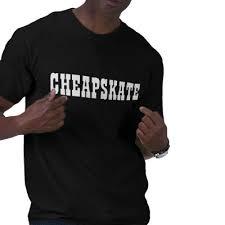
I emailed the artist, outlining my basic ideas and the timeline that I hoped to meet. I proposed that we meet today--as we did--to talk about his fee and a string of 3 payments. He was not to start work until he'd received the downpayment in August. At that time we'd meet again to brainstorm again re the shoot, which would take place in early September,
The meeting today went beautifully. And the artist--Edd--proved himself to be of the same school as Jean Schweikhard. He began to grill me in a quiet, friendly way about what I hoped to accomplish...why I felt so adamant about doing a beefcake photo...what props we might use to suggest a fusion of my character, Boss MacTavin, and his creator, Reb MacRath. We disagreed from time to time. At other times, we weren't sure how to resolve things that I still feel are essential: the absolute imperative that the photo must possess a sense of kinetic energy.

We spoke about color--I insist on black and white, but agree that the colors I wear for the shoot are partial keys to our success.
So, you might sensibly wonder, can a photo be all that important? Well, a great photo can't make a great book, that's for sure. But there are certain photos that do such justice to the spirits found within their authors' works that readers simply can't resist. A few examples?
[image error][image error]
Lawrence Sanders Ernest Hemingway


Donna Tartt Tom Wolfe
[image error]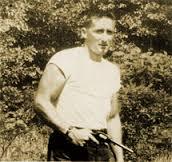
Mark Twain Mickey Spillane
We've got our work cut out for us. With the exception of Donna Tartt, the writers above are not lookers. But in every photo there's that undefinable something that commands attention and respect.
So the extra month will be well spent. The devil's in the details...and I'm hell-bent on making sure this shot is full of the devil.
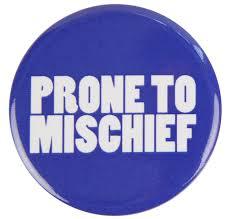
It's reborn as the result of meeting a brilliant local artist whose work had caught my eye. For decades one person had taken all my photos. The time had come, however, to find a new photographer and a new approach.
At the start I'd thought only of whipping myself into superior shape and letting my shape do the talking. Along the way, though, I started to think of the brilliant work Jean Schweikhard had done in branding my Boss MacTavin covers. I'd paid her fairly for that work and had been thrilled with the results. Yet here I was planning to engineer a photo that blended with that branding...and to do it on the cheap.

I emailed the artist, outlining my basic ideas and the timeline that I hoped to meet. I proposed that we meet today--as we did--to talk about his fee and a string of 3 payments. He was not to start work until he'd received the downpayment in August. At that time we'd meet again to brainstorm again re the shoot, which would take place in early September,
The meeting today went beautifully. And the artist--Edd--proved himself to be of the same school as Jean Schweikhard. He began to grill me in a quiet, friendly way about what I hoped to accomplish...why I felt so adamant about doing a beefcake photo...what props we might use to suggest a fusion of my character, Boss MacTavin, and his creator, Reb MacRath. We disagreed from time to time. At other times, we weren't sure how to resolve things that I still feel are essential: the absolute imperative that the photo must possess a sense of kinetic energy.

We spoke about color--I insist on black and white, but agree that the colors I wear for the shoot are partial keys to our success.
So, you might sensibly wonder, can a photo be all that important? Well, a great photo can't make a great book, that's for sure. But there are certain photos that do such justice to the spirits found within their authors' works that readers simply can't resist. A few examples?
[image error][image error]
Lawrence Sanders Ernest Hemingway


Donna Tartt Tom Wolfe
[image error]

Mark Twain Mickey Spillane
We've got our work cut out for us. With the exception of Donna Tartt, the writers above are not lookers. But in every photo there's that undefinable something that commands attention and respect.
So the extra month will be well spent. The devil's in the details...and I'm hell-bent on making sure this shot is full of the devil.

Published on July 17, 2016 15:00



